Development of mobile communications systems
- Kenichi Yazawa
- Tadashi Nakayama
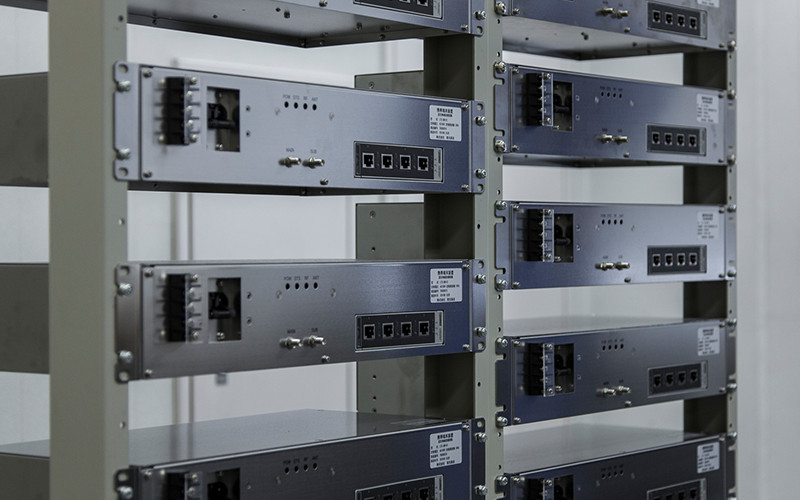
Data communication using mobile lines is one of the driving forces of the world-wide fast-growing M2M (Machine to Machine: Connection between machinery and machinery) market. The electric power industries are also responding to M2M technological trends as the background of the popularization of distributed power sources, such as solar power generation, and efforts for demand response.
In 2009, TAKAOKA TOKO began working on the construction of a data communication system that uses mobile lines to create a communication system that can transmit and receive data in a stable and constant with high security, as an elemental technology for the construction of a system that provides a stable supply of electricity and visualizes and controls diversifying energy in real time. This time, we will introduce our efforts to develop mobile communications systems using Long Term Evolution (hereinafter referred to as LTE) lines from such R&D.
Technology
Development of a communication system using LTE lines to support the information transmission in a smart grid.
At TAKAOKA TOKO, we have developed a mobile communications system that includes mobile terminals using LTE lines and servers that collect data from mobile terminals, as a fundamental system for distributed renewable power system interconnection control and demand response associated with the liberalization of electric power. This system makes it possible to remotely collect the power consumption and operating status of the equipment to be measured and controlled in real time, and store the information on the portable server, and perform control commands from the portable terminal to equipment via the host server that adjusts supply and demand.
The mobile terminal consists of an intelligent network controller (hereinafter referred to as STiNCII) *2 that uses QNX *1 as the basic software and a module for general-purpose mobile communication. This has improved real-time performance and reliability. In addition, Modbus/TCP and ECHONET Lite *3 are used as communication protocols with the measurement target device, ensuring versatility that allows connection with various devices. LTE line used by mobile terminals is not only secure, but also has a much faster communication rate than conventional mobile communications, and can be applied to various fields. In the future, we will make a plan to identify operational issues through field verification. Based on the results obtained, we will develop products and services using this system and promote the realization of a smart grid society from the field of information transmission.
*1) A commercial real-time OS for embedded systems developed by QNX Software Systems
*2) A general-purpose gateway device (manufactured by TAKAOKA TOKO) that enables the construction of various systems via the Internet
*3) Domestic standard protocol for monitoring and controlling the status of home appliances

Profile
-
 Kenichi YazawaResearch and Development Center, Technology Development Division
Kenichi YazawaResearch and Development Center, Technology Development Division
Group Manager, ICT Technology Group (when developed) -
 Tadashi NakayamaResearch and Development Center, Technology Development Division
Tadashi NakayamaResearch and Development Center, Technology Development Division
ICT Technology Group
Building a nervous system that supports information and communications in the electric power infrastructure.
Nakayama:The environment surrounding electricity has been changing dramatically over the past few years, with growing awareness of the use of natural energy and the liberalization of electric power. For example, efforts are being made to promote demand response with an aim to control power consumption with the cooperation of consumers, and to spread and expand the use of smart meters.
Yazawa:In addition, the amount of power generated by distributed power sources, including solar power generation, which is also expanding, is greatly affected by the weather. Therefore, technological development to predict the balance between demand (usage) and supply (generation) and to control and operate it is an urgent issue. Under this background, it is becoming necessary to build a system that provides stable power supply and enables real-time visualization and control of diversifying energy sources.
Nakayama:TAKAOKA TOKO has been working on developing communications systems for monitoring and controlling next-generation power infrastructures. Specifically, we began developing mobile communications systems in 2009 and have introduced them into various electric power equipment.


Yazawa:Mobile lines do not need to be installed a line and it can be installed anywhere where radio waves can reach. Strong secure communications are also one of our strengths. We take pride in the fact that we have developed a highly reliable communication system that supports electric power infrastructure. It may sound like an exaggeration, but incorrect operation of the controllers of electric power equipment may cause a big blackout.
Nakayama:Amid such changes in the power system, a technology for transmitting and receiving power data more stably and faster than ever has been required. We therefore have been working on communication systems that utilize LTE communication technologies that offer advantages over 3G lines, such as immediate communication of measurement data, notification of measurement data in short cycles, and immediate execution of control commands.
Yazawa:This research, which started around January of 2015, may be called the creation of a highly reliable nervous system for collecting all kinds of information from the upstream to the downstream of power infrastructures and monitoring and controlling power equipment in real time.

Believe in the realization of a prosperous society beyond the pursuit of communication systems.
Nakayama:Since the system is expected to be used in various electric power equipment, it was necessary to develop a highly versatile and reliable system that could be used in products with a wide variety of applications. Therefore, we adopted highly versatile Modbus/TCP and ECHONET Lite as communication protocols with the measurement target equipment. Mounting Modbus/TCP and ECHONET Lite on mobile terminals enables a system construction that can remotely control and monitor the condition of various devices. In addition, the configuration of the communication protocol can be changed depending on the target unit.
Yazawa:An OS called QNX has been introduced to improve real-time performance. In addition, SSL/TLS communications can be used to encrypt communications between servers and mobile terminals, preventing data falsification and data leakage due to unauthorized access. Unauthorized access is also made impossible by using authentication keys for servers and mobile terminals.
Nakayama:In this way, many elemental techniques are utilized to develop this mobile communications system. Incorporation of a lot of new elemental technologies lead to a daily occurrence that the system did not work as expected. It is difficult to known immediately why it doesn't work. So, verify the reason why it doesn't work and clear the problem one by one. I think it was a repetition of such an inquiry for about two years.
Yazawa:Our communication system is scheduled to be used for monitoring and control of distributed power sources such as solar power generation and wind power generation in field testing. It is expected that many issues will arise in future verifications. Believing that the demonstration data and know-how we have gained will help eliminate the power gap between the smart grid society of the future and the world, however, we will continuously strive for building systems that support the power infrastructure in the future.

Latest articles
-
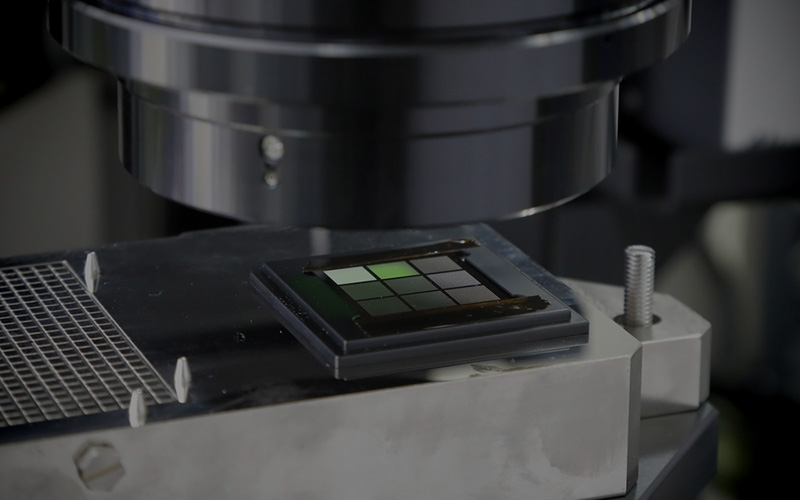 interviewThe confocal surface shape measurement system for semiconductor reliabilityIt is no exaggeration to say that semiconductors are used in everything supporting our lives and industry in modern society. Examples include smartphones, home appliances, and industrial products in various fields.
interviewThe confocal surface shape measurement system for semiconductor reliabilityIt is no exaggeration to say that semiconductors are used in everything supporting our lives and industry in modern society. Examples include smartphones, home appliances, and industrial products in various fields. -
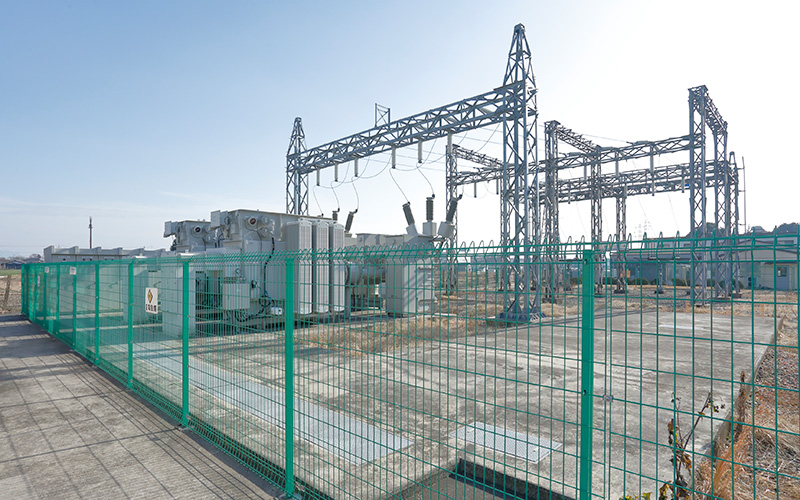 interviewImplementation of a Sensor Solution for Substation DigitalizationGlobal energy prices remain at high levels. The presumed cause is the imbalance between energy supply and demand due to recovery in economic activity from the spread of COVID-19, unseasonable weather, disasters, Russia's invasion of Ukraine, and other factors. The soaring energy prices naturally have an impact on the electricity sector, putting not only ordinary households but also electricity suppliers, or electric power companies, in a difficult situation. Power companies are being forced to cut costs to keep power prices down.
interviewImplementation of a Sensor Solution for Substation DigitalizationGlobal energy prices remain at high levels. The presumed cause is the imbalance between energy supply and demand due to recovery in economic activity from the spread of COVID-19, unseasonable weather, disasters, Russia's invasion of Ukraine, and other factors. The soaring energy prices naturally have an impact on the electricity sector, putting not only ordinary households but also electricity suppliers, or electric power companies, in a difficult situation. Power companies are being forced to cut costs to keep power prices down. -
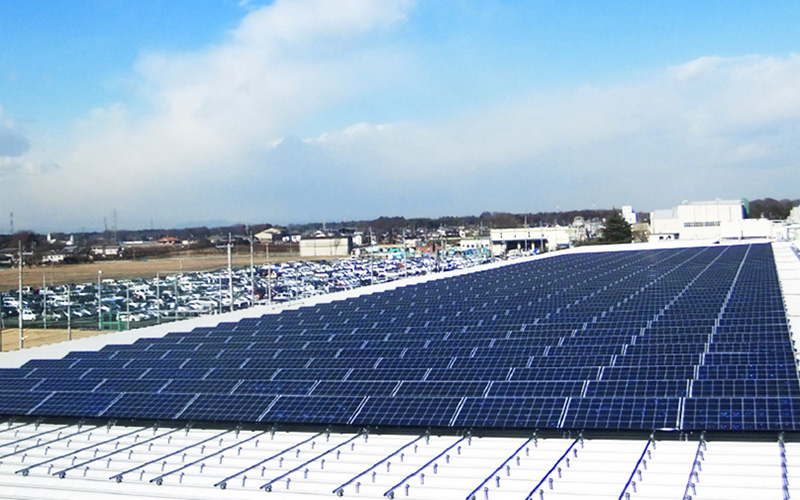 interviewDevelopment of Techniques for Solar Power Generation Prediction Using AIIn order to promote carbon neutrality, the use of renewable energy that doesn't emit CO2 is expanding.Among renewable energy resources, solar power generation is an important one which will continue to grow in popularity.
interviewDevelopment of Techniques for Solar Power Generation Prediction Using AIIn order to promote carbon neutrality, the use of renewable energy that doesn't emit CO2 is expanding.Among renewable energy resources, solar power generation is an important one which will continue to grow in popularity. -
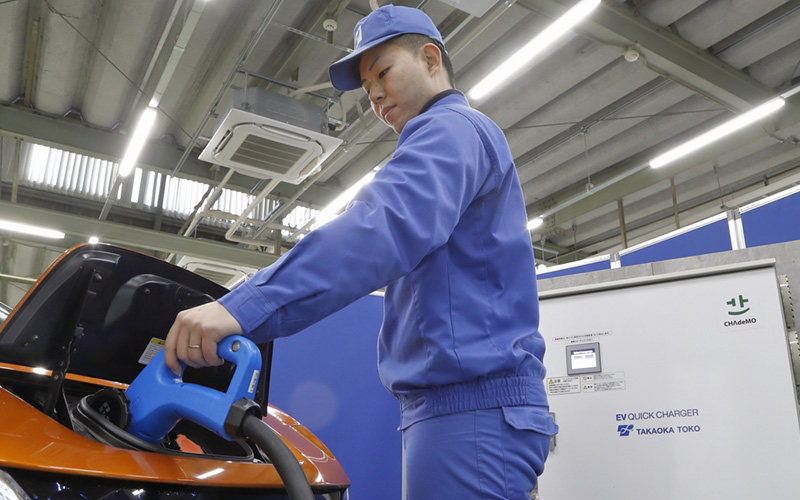 interviewDevelopment of Medium-Capacity Quick Charger for Electric VehiclesIn anticipation of expansion of EV charging infrastructure in Japan, where the EV shift is accelerating, we worked on the development of the “medium-capacity quick charger (B11)” as a charger that meets the needs for intermediate chargers between normal chargers and quick chargers. This article introduces the features of the product, ingenuity in the development process, and our future vision.
interviewDevelopment of Medium-Capacity Quick Charger for Electric VehiclesIn anticipation of expansion of EV charging infrastructure in Japan, where the EV shift is accelerating, we worked on the development of the “medium-capacity quick charger (B11)” as a charger that meets the needs for intermediate chargers between normal chargers and quick chargers. This article introduces the features of the product, ingenuity in the development process, and our future vision.
